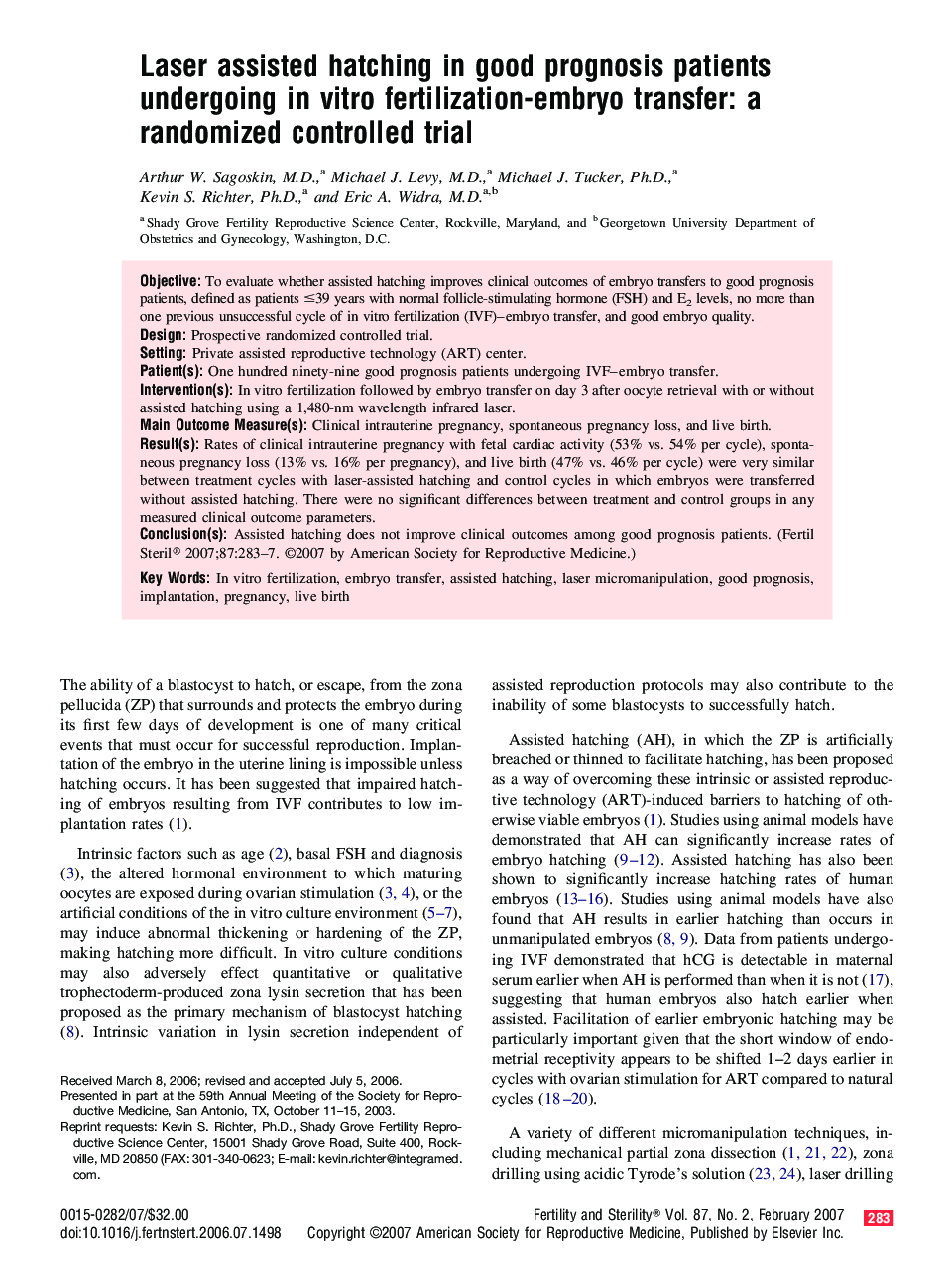| Article ID | Journal | Published Year | Pages | File Type |
|---|---|---|---|---|
| 3936081 | Fertility and Sterility | 2007 | 5 Pages |
ObjectiveTo evaluate whether assisted hatching improves clinical outcomes of embryo transfers to good prognosis patients, defined as patients ≤39 years with normal follicle-stimulating hormone (FSH) and E2 levels, no more than one previous unsuccessful cycle of in vitro fertilization (IVF)–embryo transfer, and good embryo quality.DesignProspective randomized controlled trial.SettingPrivate assisted reproductive technology (ART) center.Patient(s)One hundred ninety-nine good prognosis patients undergoing IVF–embryo transfer.Intervention(s)In vitro fertilization followed by embryo transfer on day 3 after oocyte retrieval with or without assisted hatching using a 1,480-nm wavelength infrared laser.Main Outcome Measure(s)Clinical intrauterine pregnancy, spontaneous pregnancy loss, and live birth.Result(s)Rates of clinical intrauterine pregnancy with fetal cardiac activity (53% vs. 54% per cycle), spontaneous pregnancy loss (13% vs. 16% per pregnancy), and live birth (47% vs. 46% per cycle) were very similar between treatment cycles with laser-assisted hatching and control cycles in which embryos were transferred without assisted hatching. There were no significant differences between treatment and control groups in any measured clinical outcome parameters.Conclusion(s)Assisted hatching does not improve clinical outcomes among good prognosis patients.
